Inclusivity Attachments: 5 creatives explain
Two and a half years since Screen Australia's Inclusivity Attachment Scheme was introduced, people who worked on the likes of Penguin Bloom and The Gloaming share their thoughts.
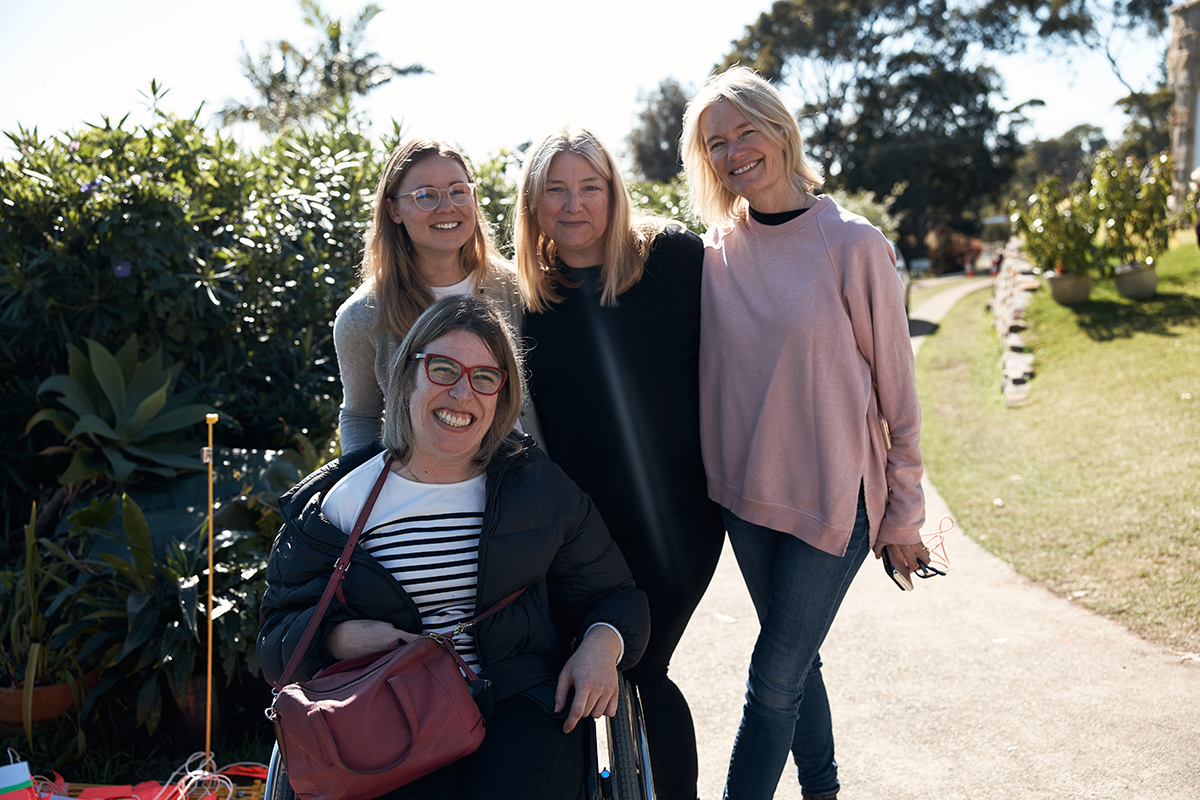 Johanna Garvin (front) pictured with Creative Executive Lucinda Reynolds, and Producers Bruna Papandrea and Emma Cooper of Made Up Stories (L-R). Image supplied.
Johanna Garvin (front) pictured with Creative Executive Lucinda Reynolds, and Producers Bruna Papandrea and Emma Cooper of Made Up Stories (L-R). Image supplied.
Back in 2015, Screen Australia introduced Attachments for Women as part of Gender Matters.
The scheme, whereby Screen Australia projects with budget of over $500,000 had to include a paid attachment for a woman, became such a success that the idea was broadened further.
From 1 July 2017 it became mandatory to include a paid attachment opportunity for an emerging practitioner on titles receiving Screen Australia production funding, with the attachment ideally reflecting the theme or content of the project, for example Indigenous, disability, gender, LGBTI+, culturally or linguistically diverse. In 2017/18 there were 22 Inclusive Attachments, on projects including On The Ropes, Lambs of God and Ride Like a Girl (read about Madeleine Dyer's attachment to Rachel Griffiths). In 2018/2019, this expanded to 39 Inclusivity Attachments.
Five of those people give their insights below into how it came about, what they learned, and the impact it’s had on their career.
The following interviews have been edited and condensed.
Johanna Garvin – director’s attachment on Penguin Bloom
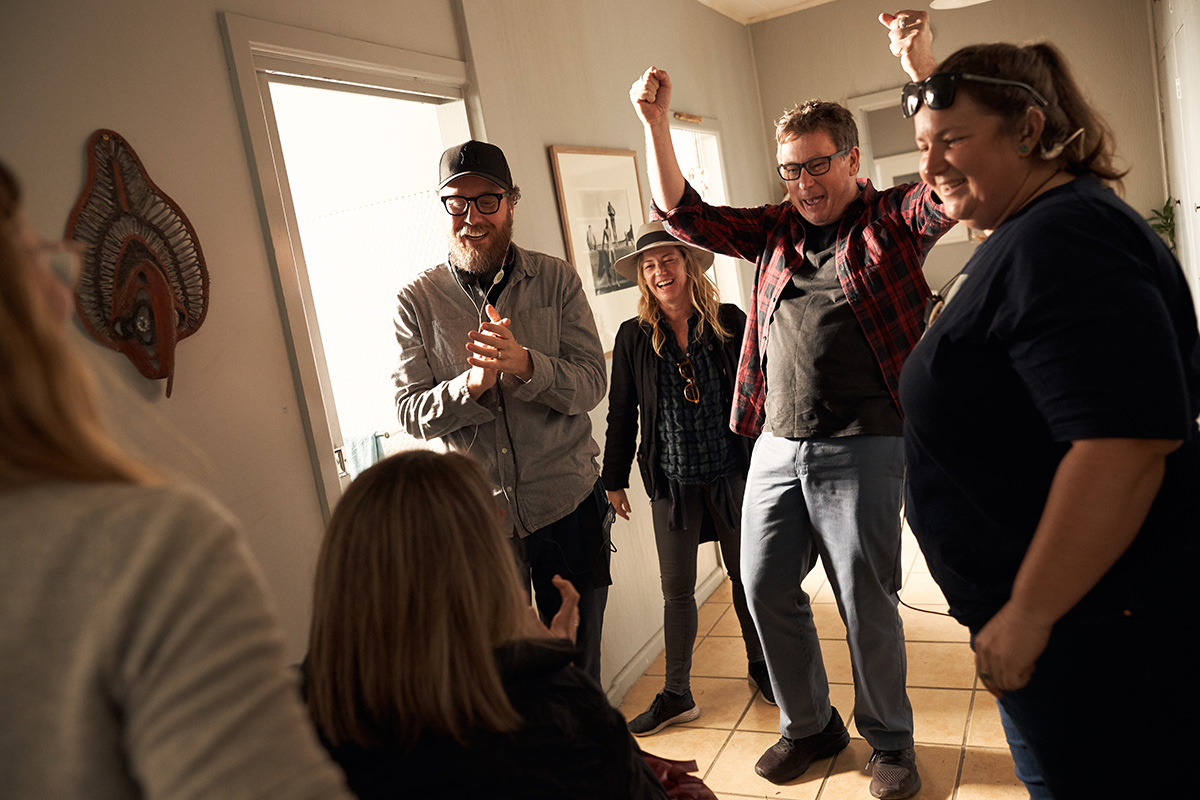 Johanna Garvin arrives back onto the set of Penguin Bloom after a hiatus to direct her own short film. Image supplied by Made Up Stories.
Johanna Garvin arrives back onto the set of Penguin Bloom after a hiatus to direct her own short film. Image supplied by Made Up Stories.
Glendyn Ivin, the director, really wanted to find a filmmaker with a disability to be a director's attachment. I met with [him and Made Up Stories] and they asked me about my experience and talked a bit about Penguin Bloom – how it was a film based on the book by Cameron Bloom about Sam, his wife, and their experience when she became a quadriplegic.
The director’s attachment has had such an impact on me both personally and professionally. From the moment I started, everyone was so inclusive and happy to share their knowledge. And it was such an honour to get to watch Glendyn direct. He's such a humble and generous leader. And to see how he works with his DOP Stan Chiplin and his 1st AD and director's assistant. It was perfect timing, because I was about to shoot Rocky and Me before the attachment. So it was a great experience to learn from people like Glendyn and all the crew and apply what I learnt onto Rocky and Me.
It's had a huge impact on my confidence as a person living with a disability. I feel like a completely different person to the one I was before I started the attachments. It's made me really hopeful and optimistic about continuing to work in the industry and that there are opportunities. Sets aren't the easiest thing to navigate sometimes if you've got a mobility disability [but] Made Up Stories are such an inclusive company. Nothing was ever a problem. I could ask as many questions as I wanted and I felt really valued and part of the team. Like I could speak up. That's had a huge impact on me because I've found my voice. Before I always felt a bit self-conscious about speaking up and sharing my ideas with people. But everyone on Penguin Bloom really encouraged that.
I even perked up and gave Naomi Watts some advice on how to push the wheelchair. And it was a really lovely because she said 'tell me if I'm doing anything wrong, or if you've got any tips for me'. No one judged me. I just felt a huge part of the team.
It's an experience that I'll treasure for the rest of my life.
Haris Fazlic – location manager attachment on Lone Wolf
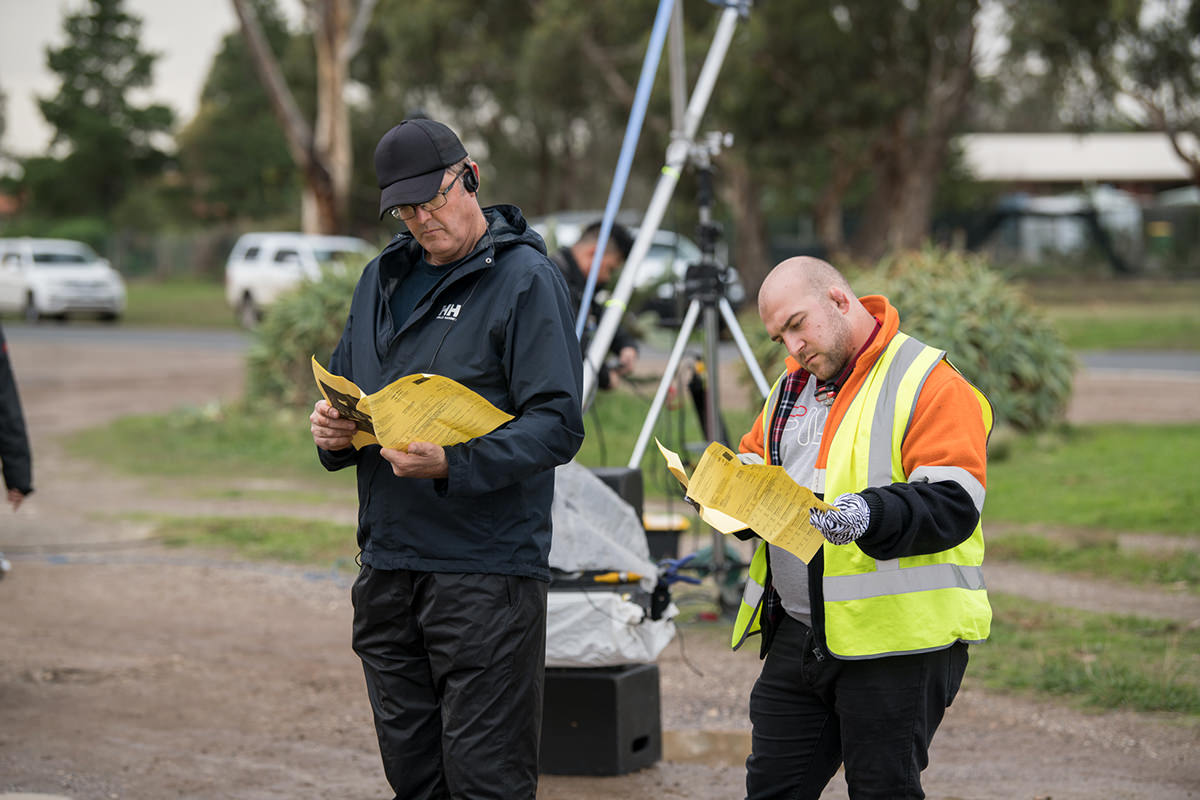 Haris Fazic (right) on the set of Lone Wolf. Photo credit: David Collins.
Haris Fazic (right) on the set of Lone Wolf. Photo credit: David Collins.
I was volunteering at the SPA conference [Screen Forever] and I met a gentleman named Shaun Miller, who is an entertainment lawyer. At the time I was studying a masters of producing at VCA and Shaun was a guest lecturer, so I sent him an email asking if I could intern with him. Shaun received a phone call from Mat Govoni, who was the producer for Lone Wolf, and asked if there was a position on board for myself. He said there were two positions: a production assistant role and an industry attachment as a location manager's assistant. And the thing with locations is as an aspiring producer, locations and risk assessment forms are something that I was going through.
Going to the actual industry attachment, I thought that I was prepared. However, I did not understand just how much responsibility a location manager, or assistant, or anyone in location department actually had. Coming from quite a small production background. I'm so used to the producers doing everything and it's unbelievable just how much actually transitions into the locations department. I knew it was going to be great learning opportunity, but I didn't understand just how much it would resonate with what I wanted to do in the future.
There were only two people in the location department, Corey Mansfield the manager and myself. I had the opportunity to speak with Corey and talk to him about the process and the pros and cons of finding locations that actually able to complement the production and the whole visual look. When you're dealing with the landlords and it was such an eye-opening experience because… no matter how prepared you are, you can't you can't really plan for everything. I had the traffic management team that I had to communicate with and I'd never done that before. I met one of the stunt coordinators, [the] completion guarantors… and cinematographer Geoffrey Simpson… The assistant director Annie Maver.
Since then I've produced two short films and everything I've learnt, for example, on how to deal with city council, filling out risk assessment forms, giving all the required paperwork, ensuring you have all the documentation with you. It was such good exposure, because it's exactly what I needed.
I would have never imagined that volunteering at the SPA conference would have brought me to this. Do the research, always apply yourself, and at the end of the day, if anyone's going to give you an opportunity you have to put in the effort. Show initiative. And even if you do a job or a role that you're not extremely passionate about, give it your all, because others around you will see the effort, and there's the chance they will bring you back on [for something else].
Jessica Khoury – producer’s attachment on Palm Beach
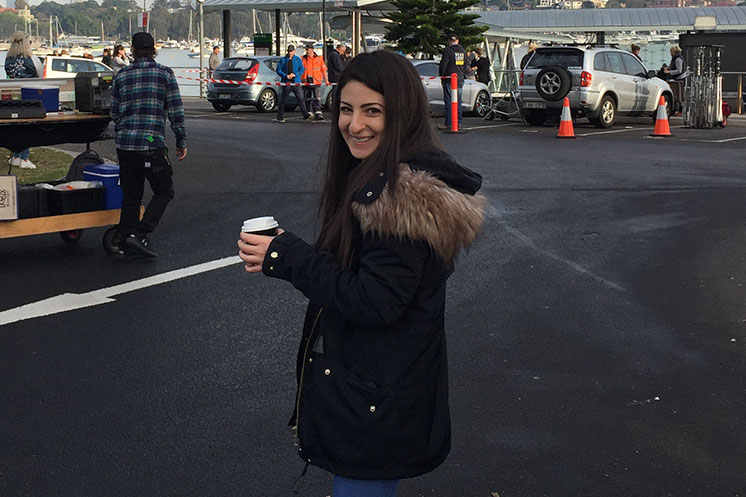 Jessica Khoury on the set of Palm Beach.
Jessica Khoury on the set of Palm Beach.
Producer Bryan [Brown] is a patron of my film festival and a long-time friend and when he came to me with the script for Palm Beach and said he was going into production, I asked him ‘how can I be a part of it?’ I went through the same process as every other crew member in applying for the job and gave my CV to Sam Thompson, the line producer.. I made it to the next round and then next thing I knew, I was on board.
I had heard of the [Attachment Scheme] because I sat as treasurer on Women in Film and Television board (WIFT). But I had never actually looked into it until Bryan put it forward. I think he knew from the get go that it was a good fit for me and I think it was one of the best experiences of my whole life to date.
I came on board for preproduction [and] we were at Fox [Studios] organising all of the contracts and shooting schedules and locations and cast members....then stayed on board into post-production.
It was really good to get firsthand experience on set, being next to Bryan and Deb and seeing how things run, how they make decisions, especially when things are changed at the last minute. They really put me at the front and centre with everybody – with publicity, with the lawyers. They made sure that I gained experience in every part of that production. So I had an idea of how things run, obviously with shooting, but also understanding the whole contractual obligations behind making a film. But also, the exciting things that you can leverage off as well [like] the partnerships.
It's definitely informed my decisions moving forward. I still run the film festival and it's one of my goals to produce film, so I've been able to dabble my hands in getting involved in other productions, whether it's in the development stage or the preproduction stage. I deal with distributors a lot of the time as well, and when you have that background on set and also that producer mindset, you understand and see things a lot differently and look at it with a different perspective.
My advice is to be resilient and never change what you believe in. But also put yourself out there and just let people know who you are and what you do and what you want, because you never know who you're talking to and where that conversation will lead you. They're looking for people with that kind of energy and that kind of excitement. It stands out.
Chad Cowan – camera attachment on Go!
Chad Cowan - Camera Attachment on Go!
Filmmaker Chad Cowan, who hails from coastal Western Australian town of Dunsborough where he runs his own video production business, was a camera attachment on upcoming feature GO! for four weeks as it shot in the nearby city of Busselton.
I studied digital media at TAFE and through that got a contact, who knew one of the producers on Go!, Barbara Gibbs (the line producer). I ended up getting the work from that.
My official role was helping with the camera department, but I also spent a lot of time in the video department, setting up the monitor and headsets for the director so they could see what was going on. I managed to work pretty closely with both the video and camera department, so was pretty close with both the DP Peter Eastgate and the director Owen Trevor.
There was about 60 people [on set]. So it was a good size to where it wasn't too big [but] enough to experience what it's like on a bigger set. Definitely by the end, I knew everyone's name on the set and got to see how it all operated. Because making videos where it's just me, you don't really see why you need 60 people. But getting onto that set really made it obvious all the different roles and all the different areas that goes into shooting like that.
The first half of [the attachment] was a lot of the interior, story-based shots. And then the second half was more about getting all the necessary go kart racing shots and all the different rigs that are necessary for that.
I have my own video production business where I produce videos for [local businesses], and also a little bit for weddings and real estate. So it definitely helped - in building more trust, the quality of the videos I’m making, how I shoot my stuff, how I plan it and the steps. I've started concentrating on new areas within shooting - paying more attention to the story and also the importance of having more of a plan
Gabrielle McLeod – production attachment on The Gloaming
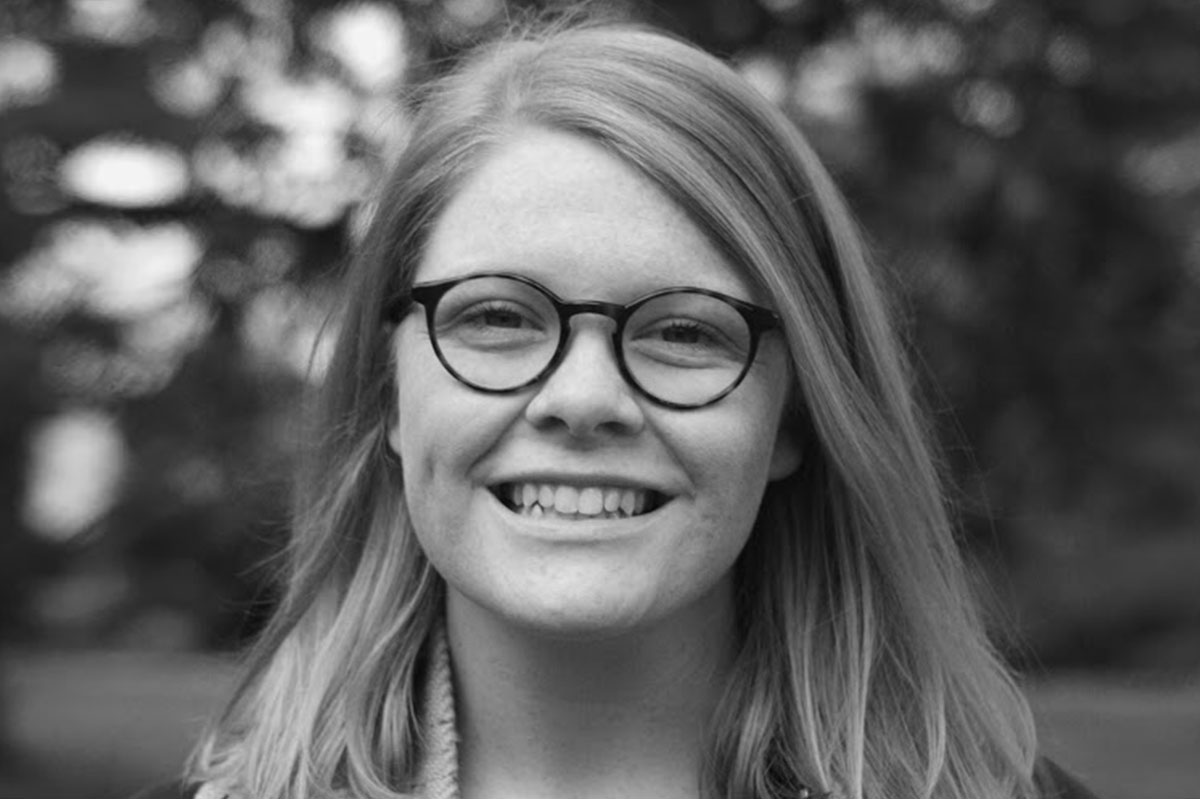 Gabrielle McLeod.
Gabrielle McLeod.
Tasmanian emerging producer Gabrielle McLeod worked for six weeks in the production office of The Gloaming – the last five weeks of the shoot and one week of post-production. Gabrielle’s background has largely been in advertising, working as a producer’s assistant, before her recent move to make the leap into film and television.
I split my time between Melbourne and Hobart, but wasn't really getting any work in Hobart. I have always kept an eye on the attachments down in Tassie, because I've always really wanted to work there - that's where I grew up and spend a lot of my time. I had been subscribed to the Screen Tasmania email list for a long time and saw they were advertising the production attachment there, so I applied for it and luckily got it.
It was assisting and learning in the production office, [where I] shadowed the production secretary, and helped the production coordinator and travel coordinator. It was very interesting seeing what they do and understanding the roles a bit more within the office. It's always good to get that hands-on experience of seeing what people actually do.
I think that in the industry, especially for people like myself and a lot of my friends that went to film school, there's a big gap between that short film, music video, or film school shoot to then get to professional-level productions. If you're thrown in the deep end, going in blind, [you don’t even realise] the leap that needs to happen. The attachments are a good stepping stone to have that introduction into the professional world.
But at the moment Lisa Embleton, who was a production coordinator on The Gloaming, she actually got me on a job called Clickbait in Melbourne and so I'm a runner on that at the moment. That's probably the most significant thing for me to come out of [the attachment] and also meeting people that were down in Tassie as well [and] get my name out there.
How to apply for an Inclusive Attachment:
- Use Screen Australia’s Upcoming Production Report to see what titles are in ‘pre-production’ or ‘production’ in your state. The earlier the better to get in touch.
- Of the productions listed, click through to the individual titles of interest to you. If you see the ‘Screen Australia supported – Production support’ orange band down the bottom of the listing, that means the Inclusive Attachment scheme is likely to apply.
- Look who the Production Company is, and reach out to them directly to express your interest in an Inclusive Attachment. Attach your resume, IMBD (if you have one), your contact details and your availability.
Subscribe to the Screen Australia newsletter to know as soon as funding is announced for the new titles and the production companies behind them.

What to read next
Writer/director Mirrah Foulkes and cinematographer Stefan Duscio ACS discuss reimagining the classic Punch and Judy puppet show for the big screen.
07 Nov 2019
Scott Gillies